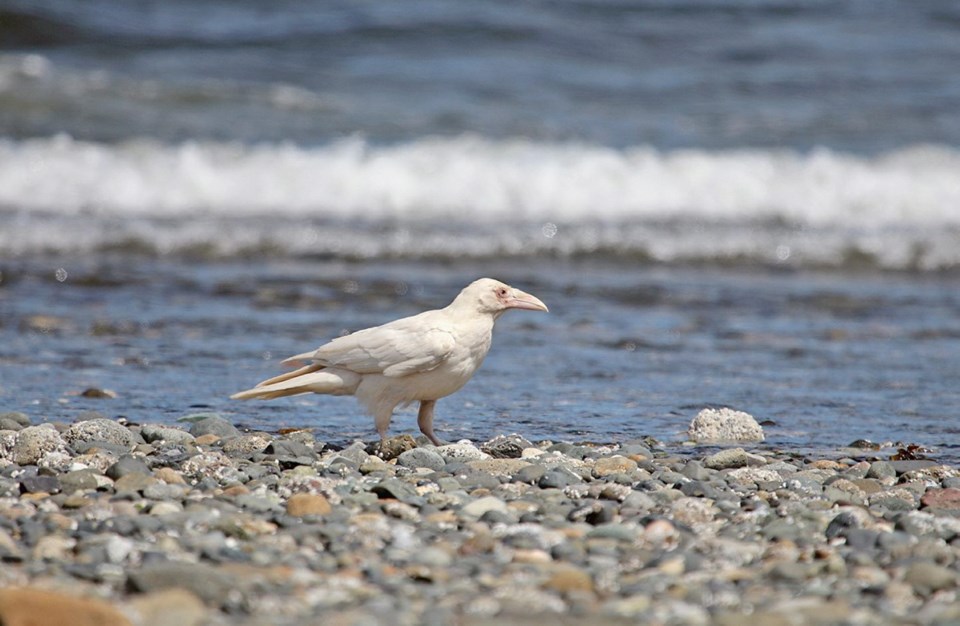A white raven spotted in the Qualicum Beach-Coombs area this summer is the offspring of traditionally black ravens that have been producing the genetic anomalies for two decades on the central Island, says a noted bird photographer and author.
Mike Yip says the mysterious white ravens are considered leucistic — not albino, which have no pigment at all. These ravens have blue eyes and likely have genetic defects that dilute their natural colour.
“They are a freak of nature,” Yip said.
He hasn’t seen the white raven this year, but has been documenting and photographing the strange corvids since 2007. Although there was a report of a white raven in Haida Gwaii more than 30 years ago, Yip said the central Island birds are unique.
“I’ve declared the region White Raven Capital of the World, and nobody’s disputed it.”
The latest sightings show at least one white raven by itself and with other ravens and some crows.
Lisa Bell, a Qualicum Beach resident, photographed the white raven on the beach last week.
“It came with two crows, landed really close to us and started eating tiny crabs,” said Bell, who took several photos. “He just pecked around and performed for me for about an hour. He wasn’t scared at all.
“It was amazing to watch.”
Scientists say ravens typically live for up to 20 years and mate for life.
They lay up to five eggs each season. Yip believes the mating pair on the central Island have been producing between two and three white ravens a year, along with traditional black ravens.
It isn’t clear how old the mating pair might be or whether there are other pairs with the recessive gene.
Yip said at least two white ravens were hatched last year.
It’s not known whether this year’s sightings involve one bird or several.
Yip believes the white ravens don’t live long in the wild.
“Otherwise, I think we would see a lot more of them around over the past several years,” he said.
“If they are flying to other areas, there would be sightings.”
Yip did find one white raven carcass a few years ago.
He said the feathers of the white ravens are not as durable or warm as their black counterparts, and noted they may also have weaker eyesight.
Bell said she cherished the time spent watching the white raven, and adds it to a growing list of strange encounters she’s had with birds over the years.
Last April near Bowser, she photographed two bald eagles in a mid-air conflict. The eagles locked talons and swooped downward, landing directly on top of her.
She had several cuts and bruises and swelling on her chest. The impact also injured her back. “I got three photographs off and they were on top of me,” Bell said.
A year earlier, she photographed a bald eagle and Canada goose fighting on the ground near Spider Lake.



